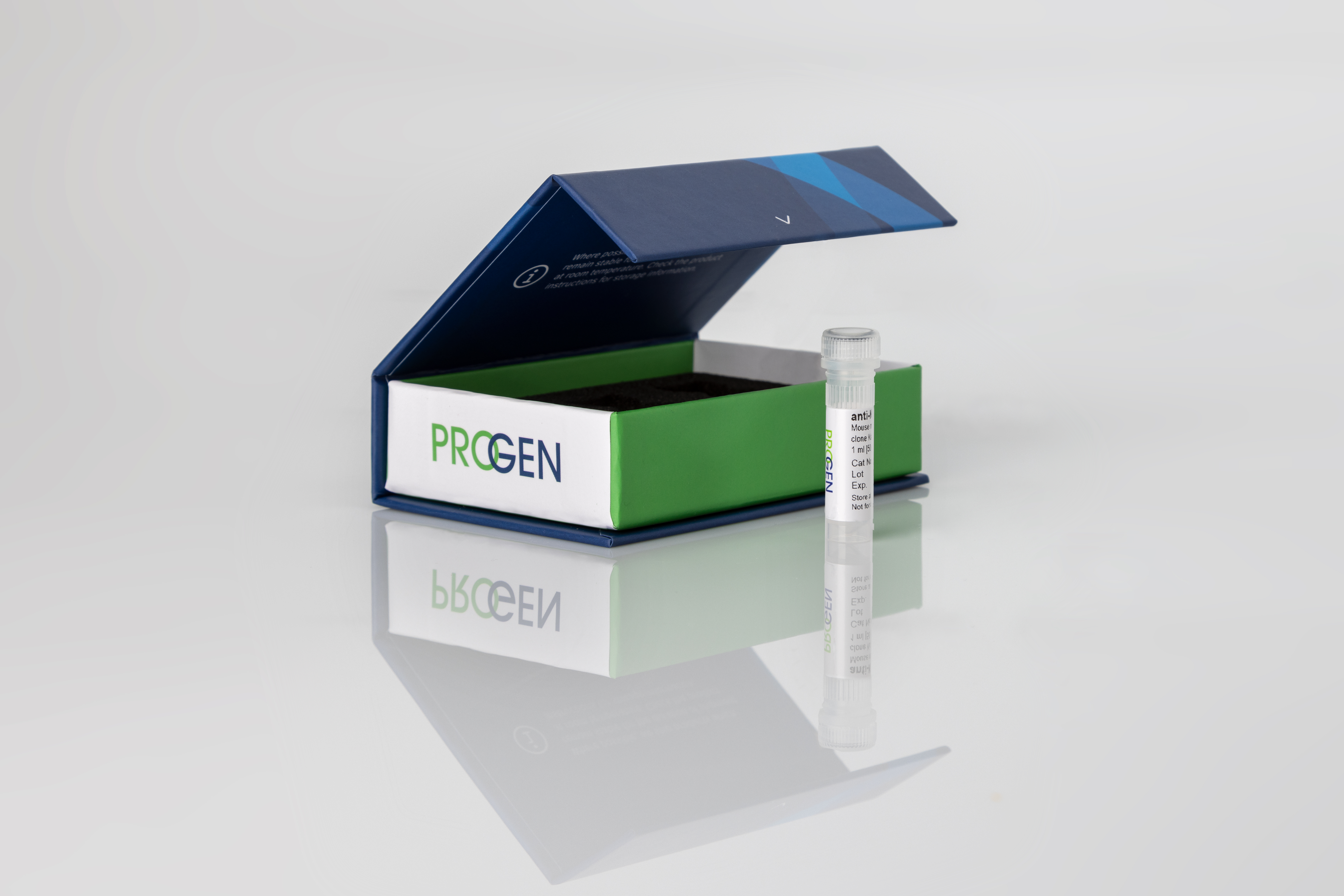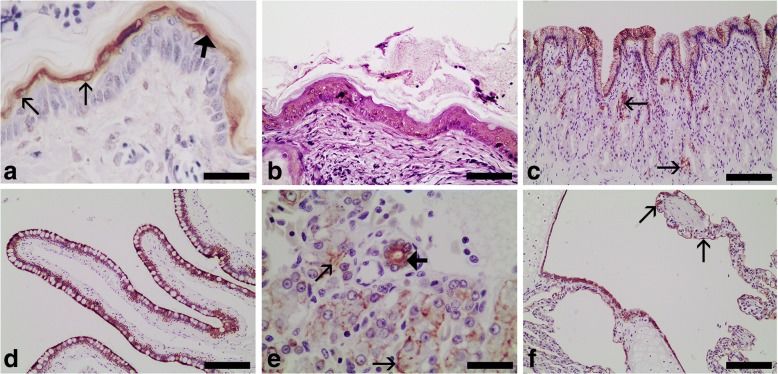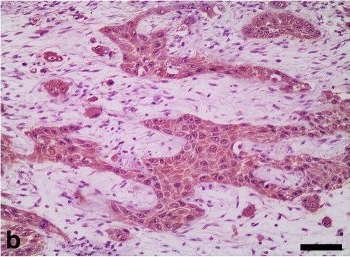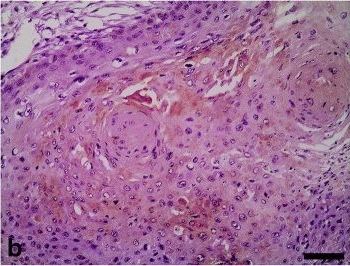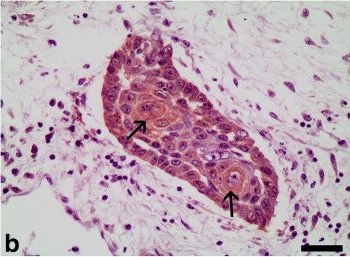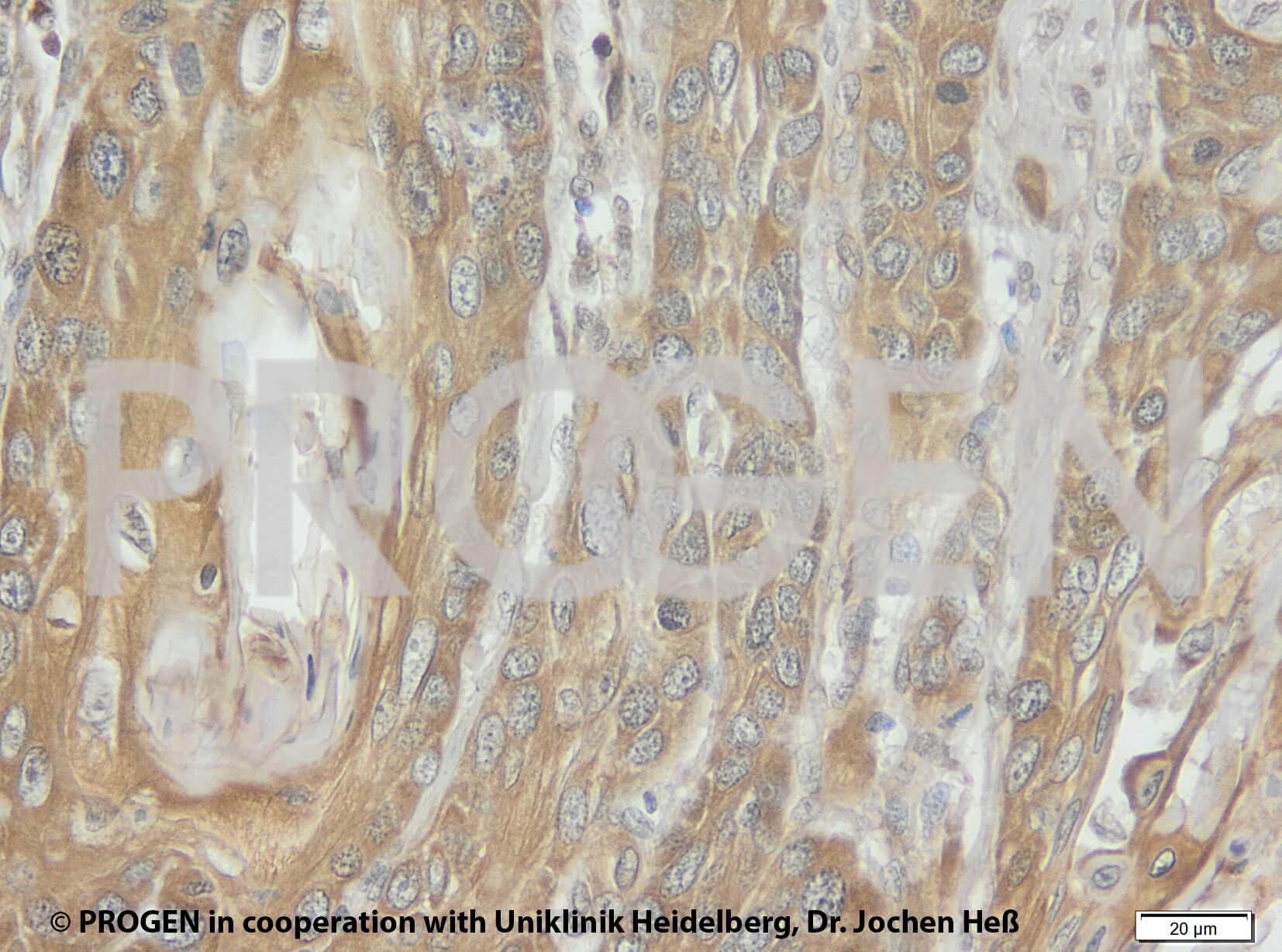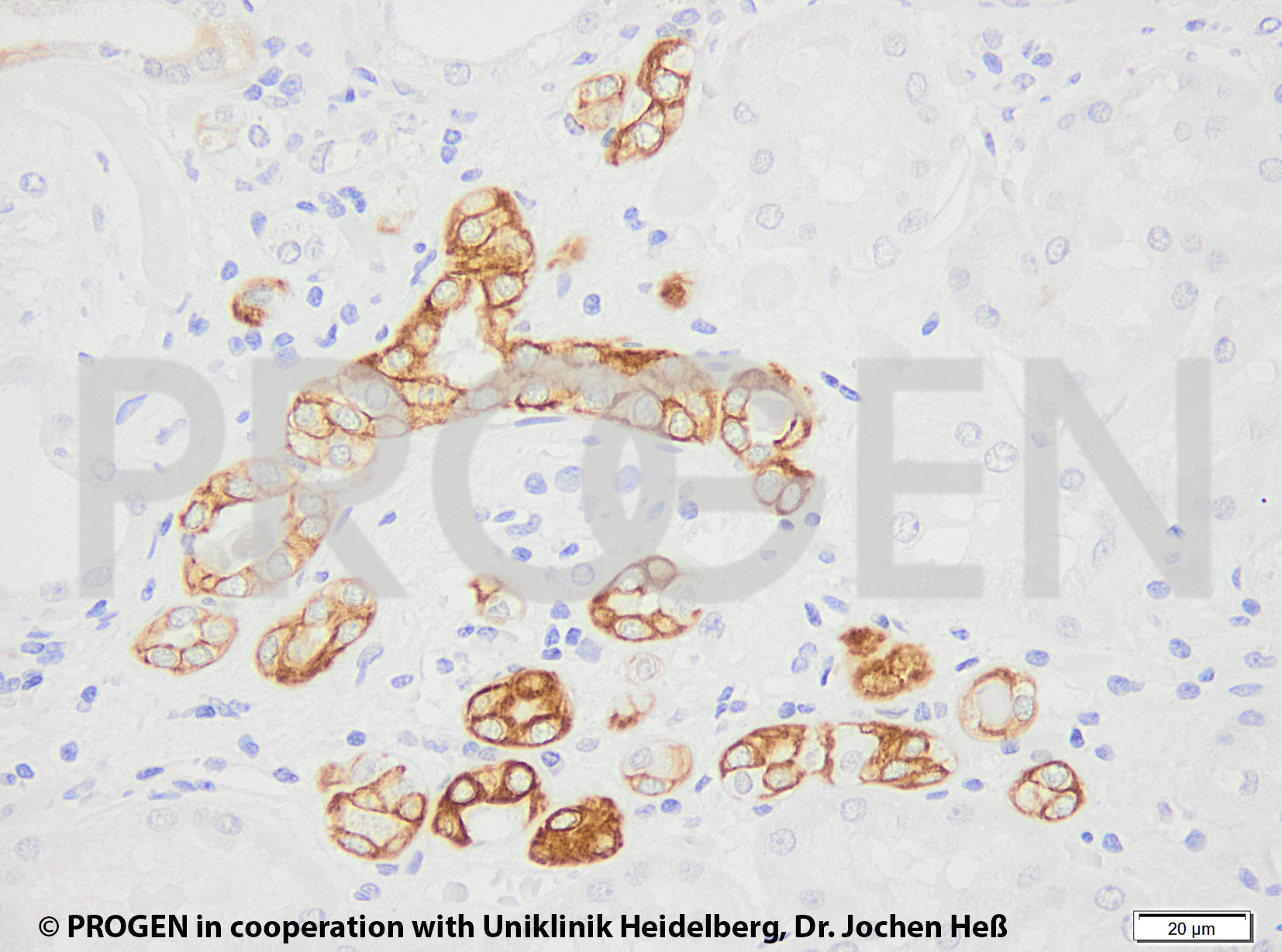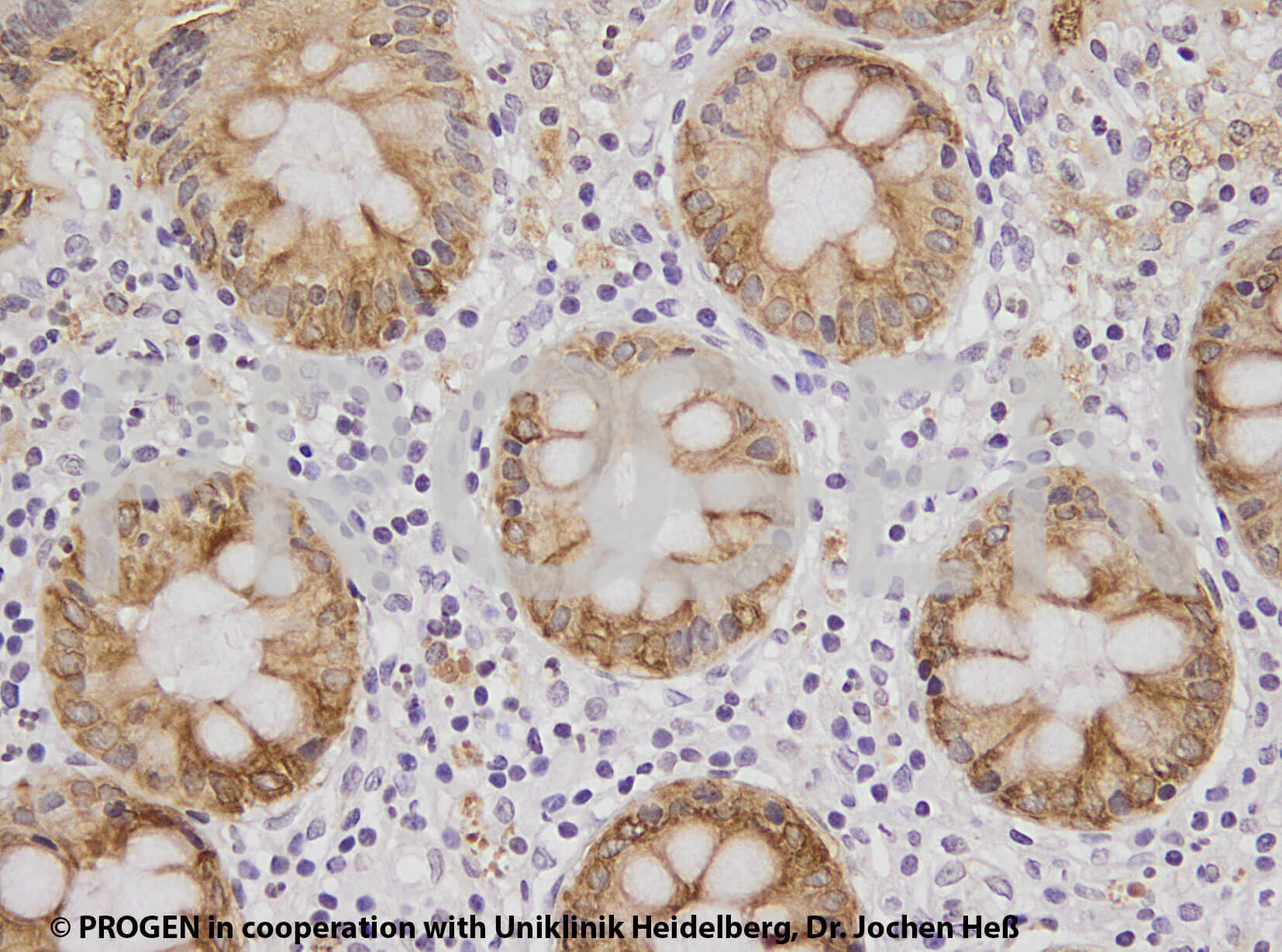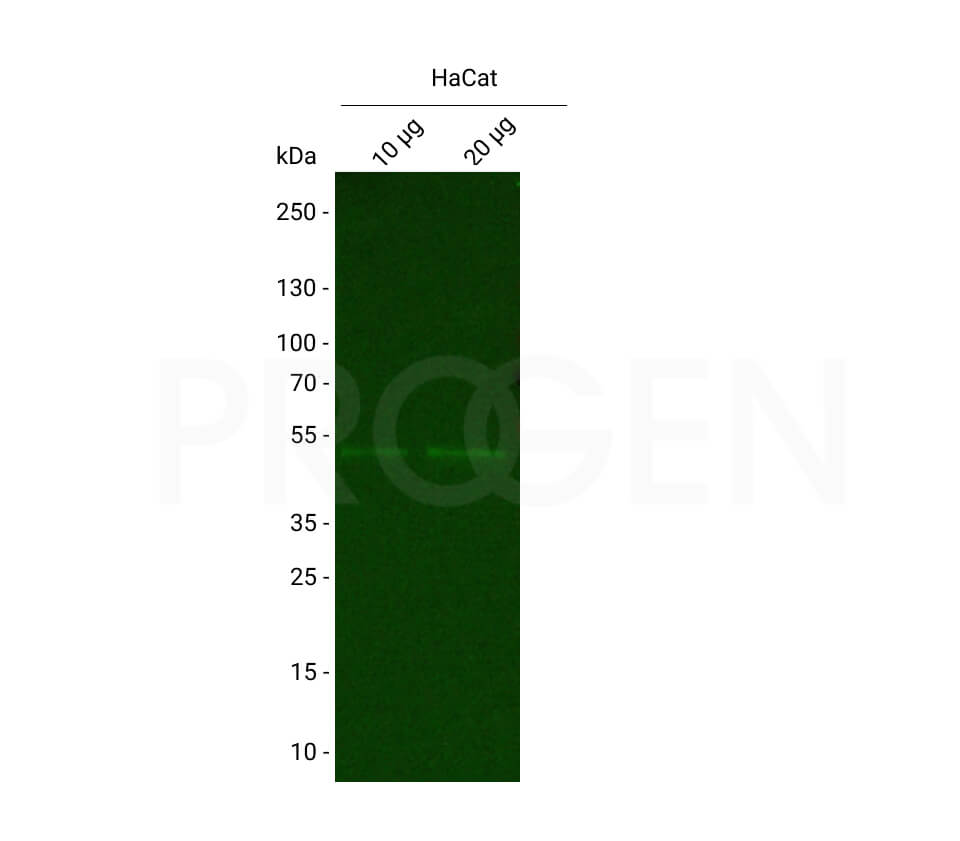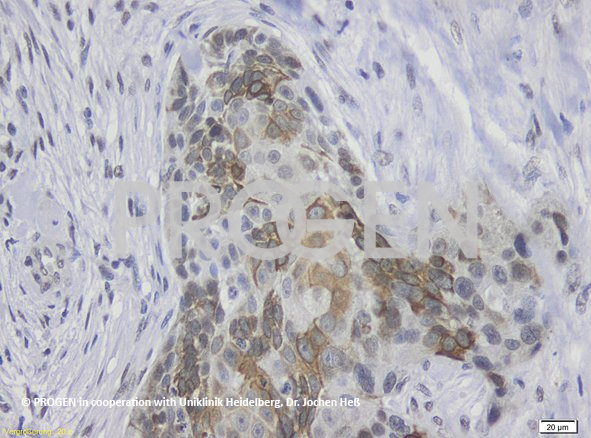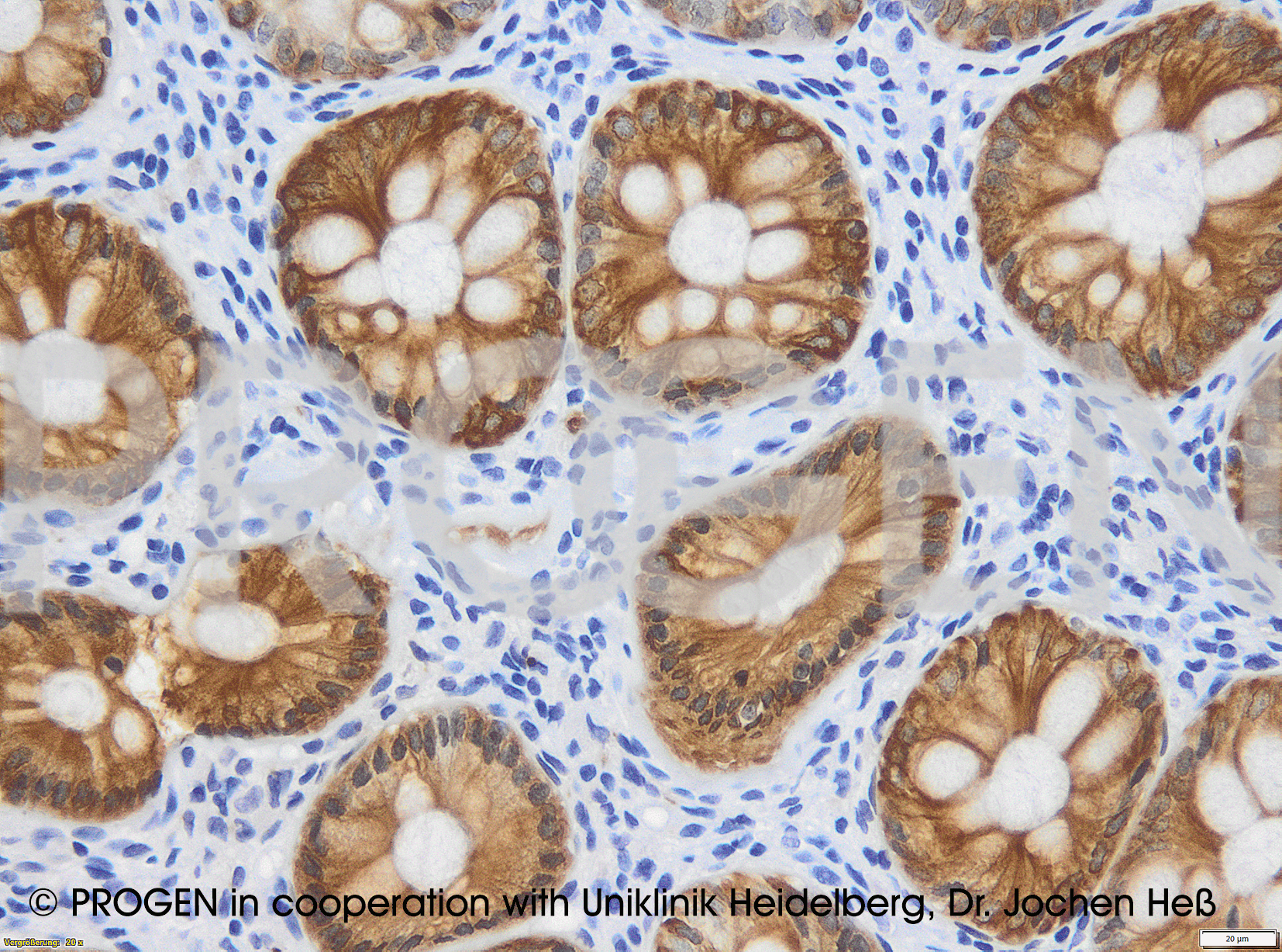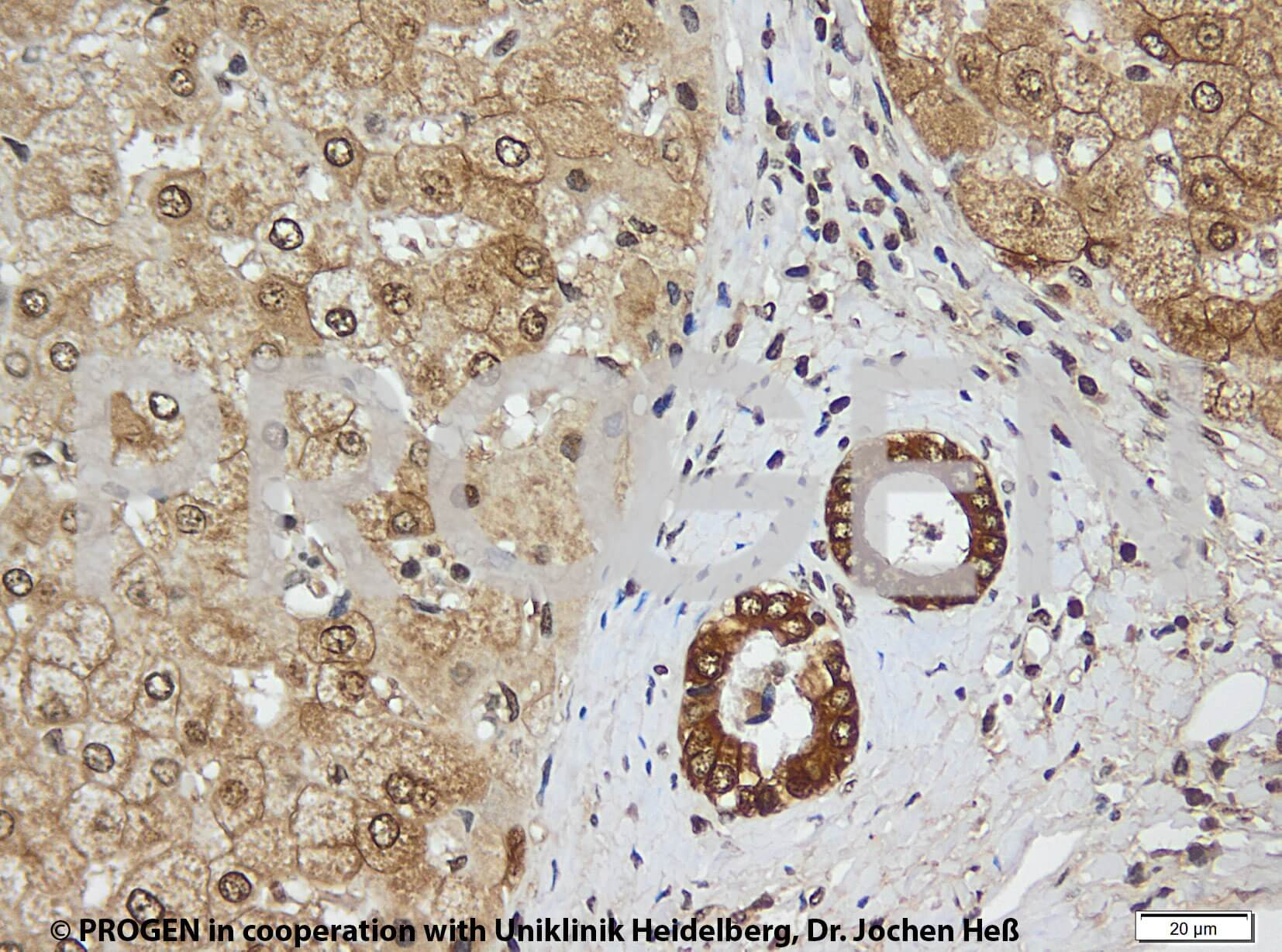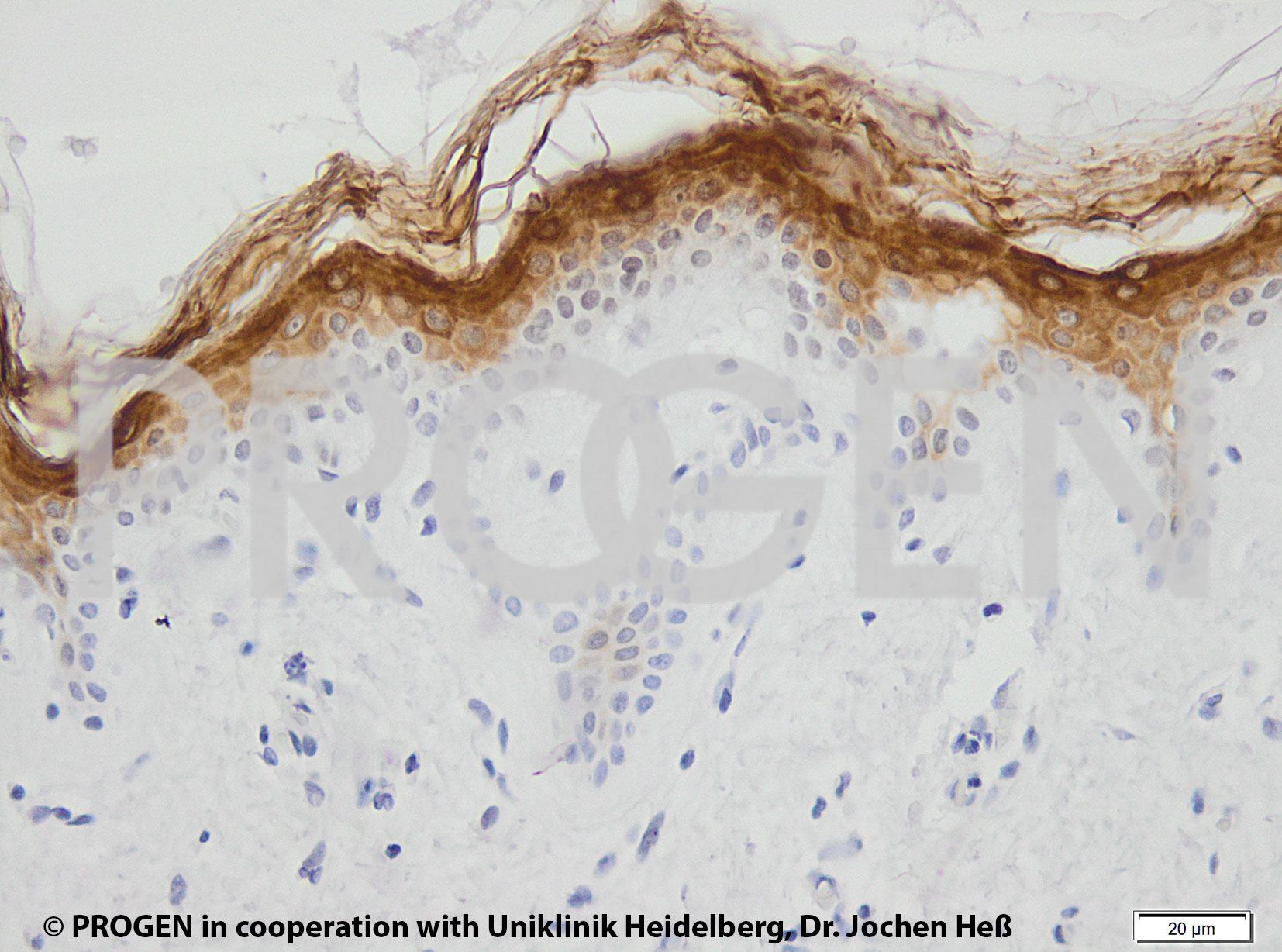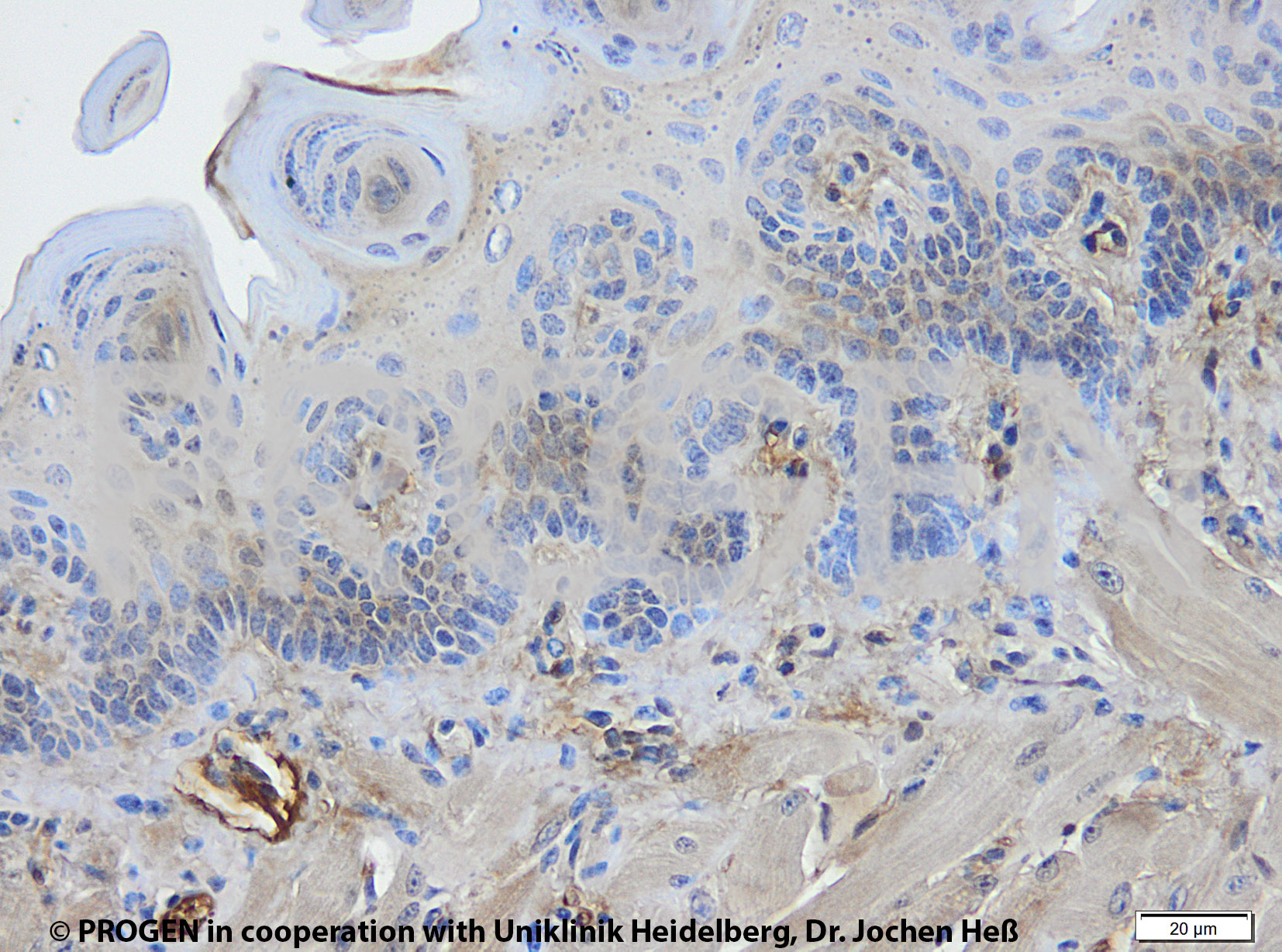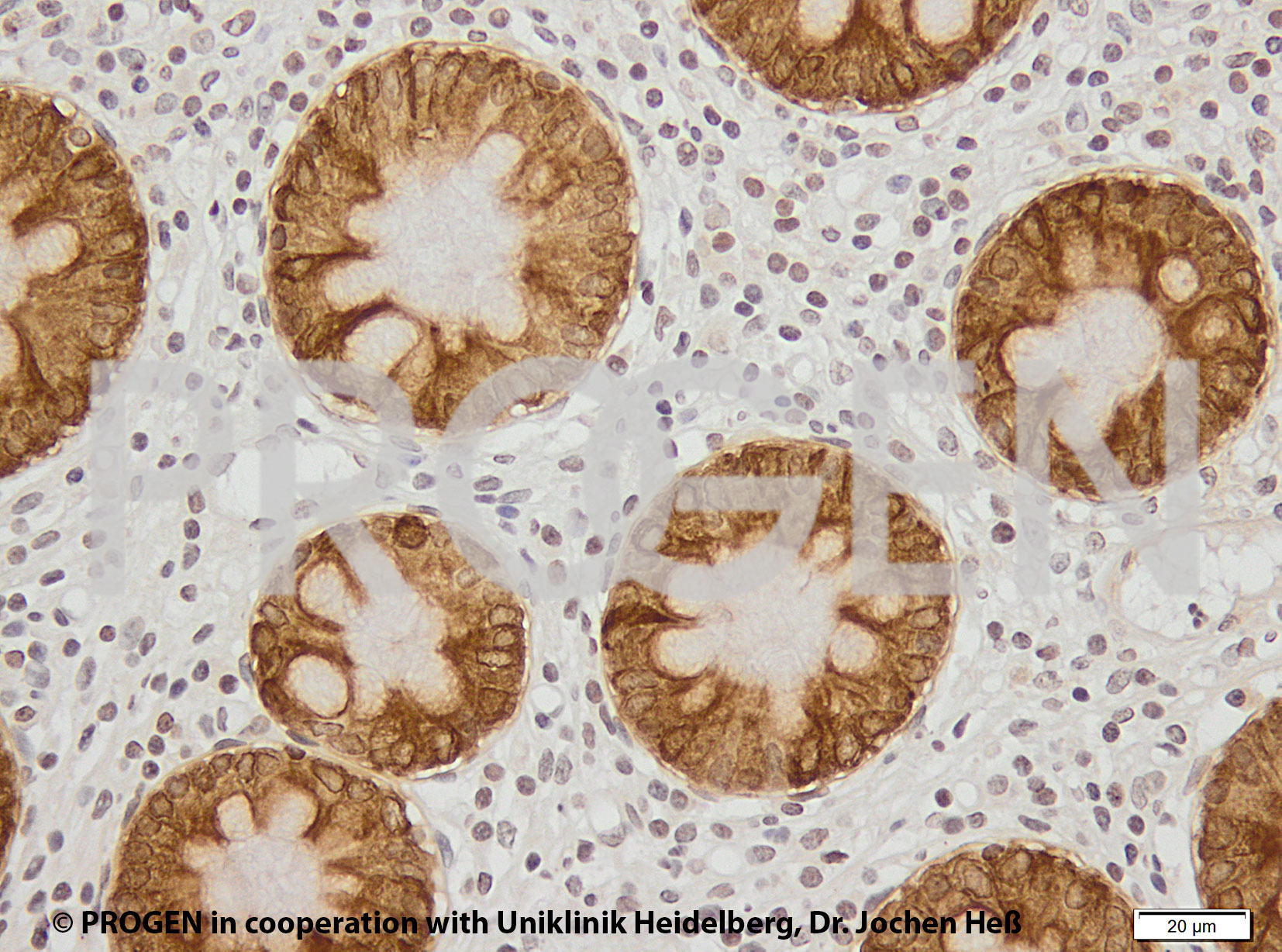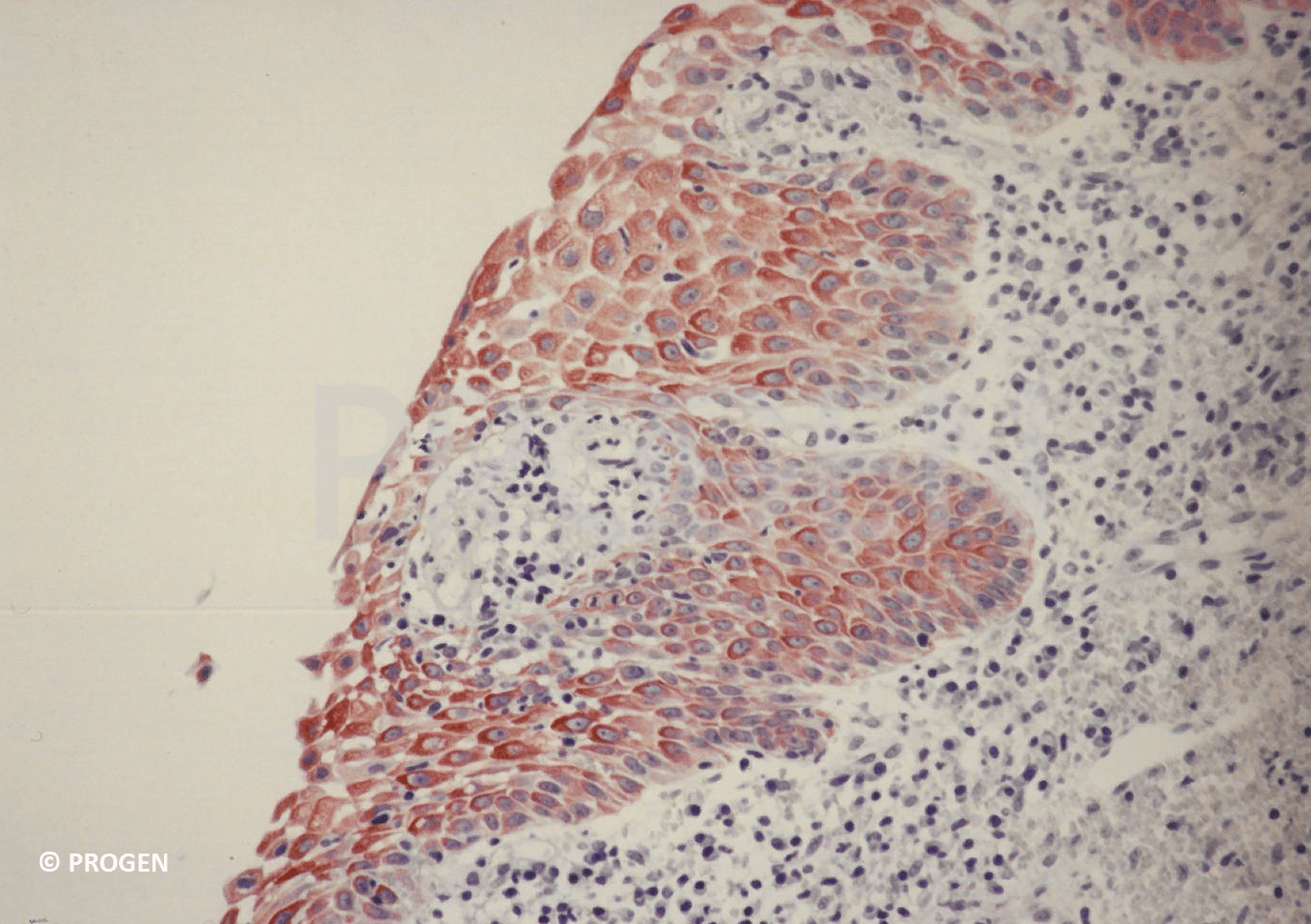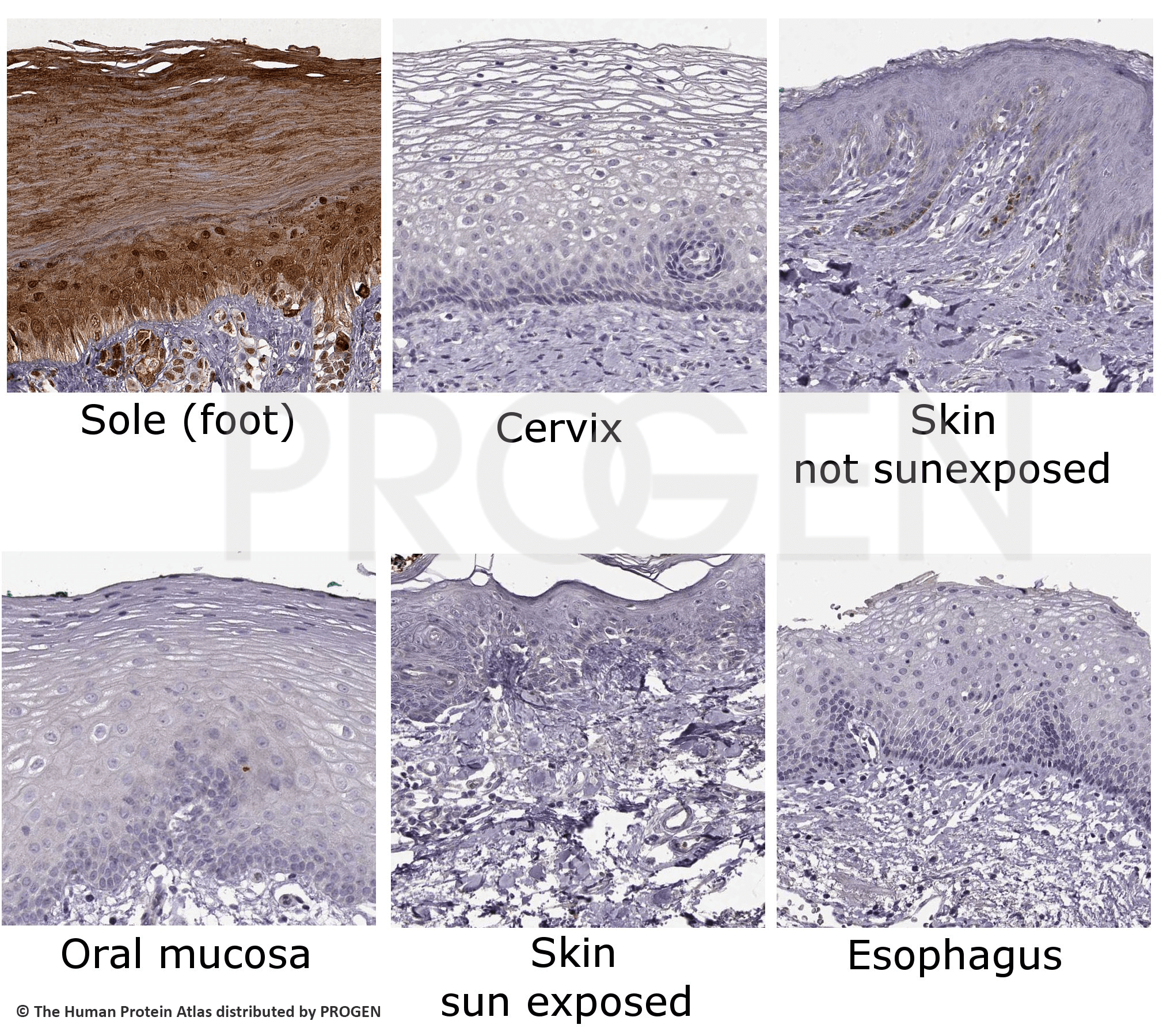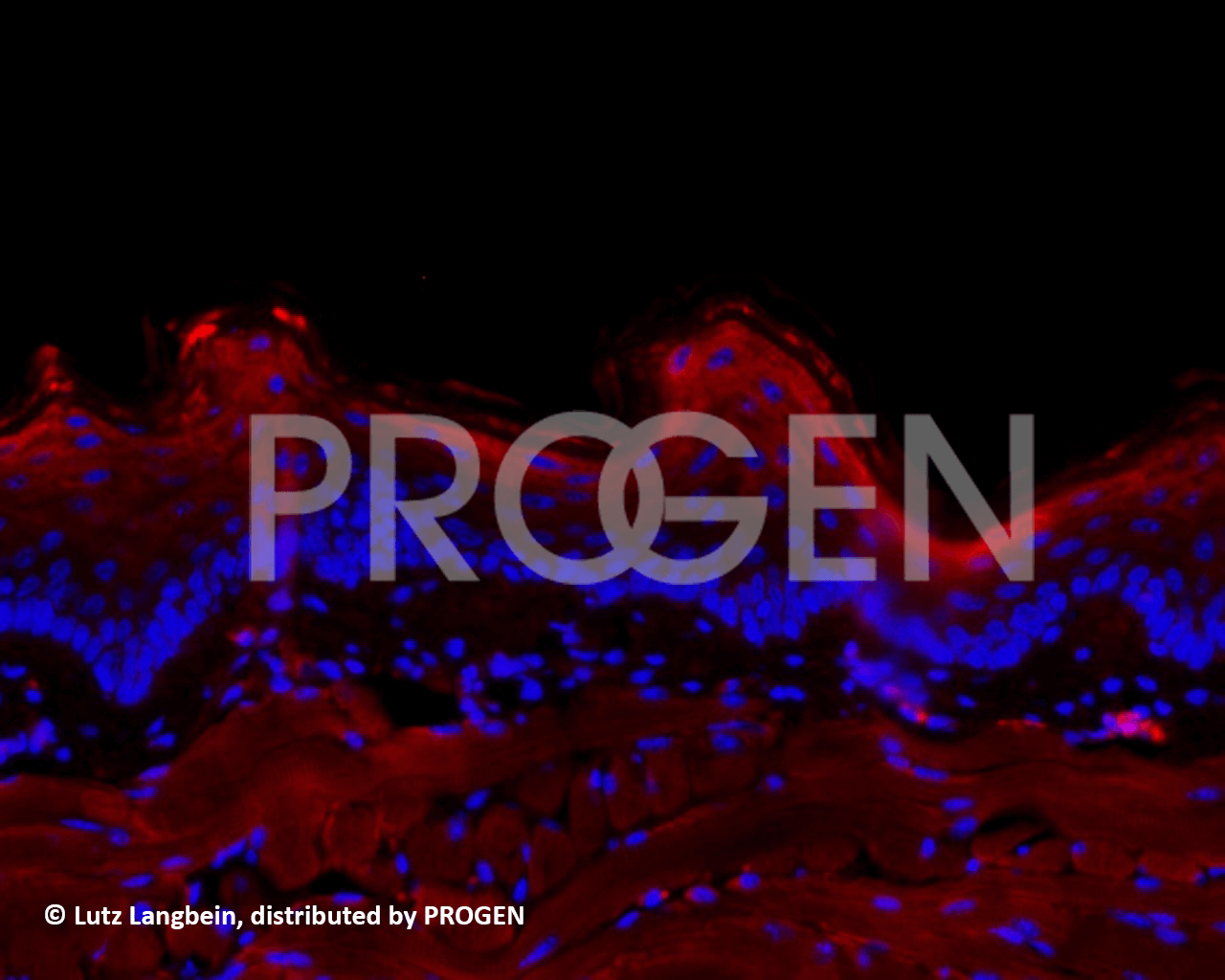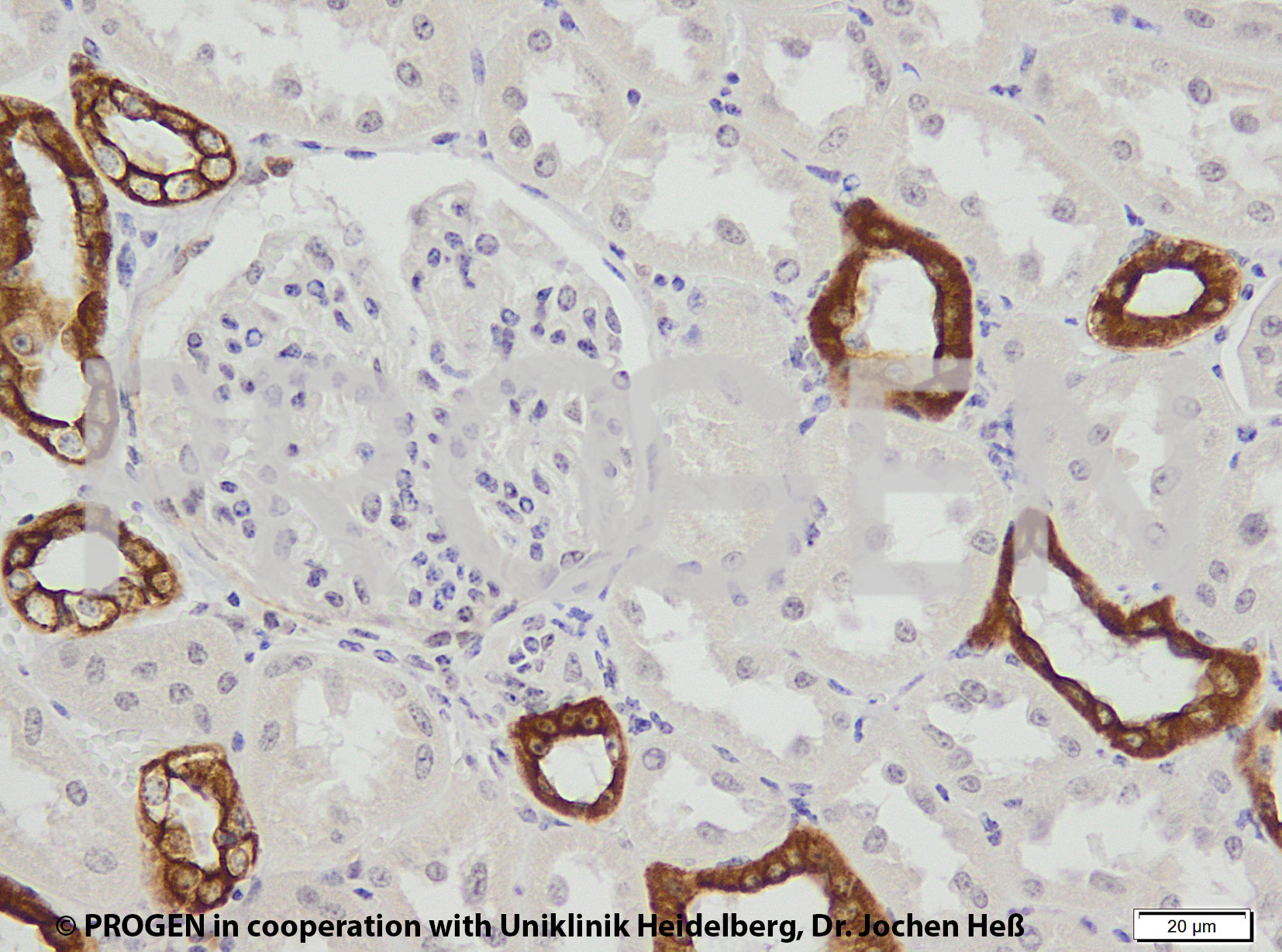anti-Keratin Type II mouse monoclonal, AE3, purified
- Mouse monoclonal
- Suitable for ICC/IF, IHC and WB
- Reacts with bovine, chicken, human, monkey, mouse, rabbit and rat
- Isotype: IgG1
Product description
| Quantity | 1 ml (200 µg/ml) |
|---|---|
| Antibody Type | Monoclonal |
| Host | Mouse |
| Isotype | IgG1 |
| Conjugate | Unconjugated |
| Application | ICC/IF, IHC, WB |
| Purification | Affinity chromatography |
| Reactivity | Bovine, Chicken, Human, Monkey, Mouse, Rabbit, Rat |
| Storage | Short term at 2-8°C; long term storage in aliquots at -20°C; avoid freeze/thaw cycles |
| Intended use | Research use only |
| Clone | AE3 |
| Immunogen | Human epidermal keratin |
| Concentration | 200 µg/ml |
| Formulation | PBS pH 7.4 with 0.09% sodium azide |
| Note | Centrifuge prior to opening |
Applications
| Tested applications | Tested dilutions |
|---|---|
| Immunocytochemistry (ICC)/ Immunofluorescence (IF) | Assay dependent |
| Immunohistochemistry (IHC) - frozen | 1:200 |
| Immunohistochemistry (IHC) - paraffin | 1:200 (protease treatment and/or microwave treatment recommended) |
| Western Blot (WB) | Assay dependent |
Background
AE 3 represents an excellent marker for distinguishing carcinoma from non-epithelial tumors. Tumors specifically detected: all epithelia and their neoplasms.
Polypeptide reacting: Mr 53,000 to Mr 67,000 basic type II keratin polypeptides of human epithelial proteins (keratins - formerly also designated cytokeratins - nos. K1 - K8). Epitope has been mapped to aa 266-299 on alpha-helical rod domain (see Waseem et al., 2004).
Reactivity on cultured cell lines: MCF-7, A-431, RT 112.
Waseem A, Karsten U, Leigh IM, Purkis P, Waseem NH, Lane BE: Conformational changes in the rod domain of human keratin 8 following heterotypic association with keratin 18 and its implication for filament stability. Biochemistry 43, 1283-1295 (2004)
References/Publications (10)
Downloads
Q & A's
Customer Reviews
Login
FAQs
The concentration of purified antibodies is mentioned on the datasheet.
For prediluted antibodies the concentration may vary from lot to lot. The concentration of these antibodies is not mentioned on the datasheet and can be requested at support@progen.com.
The supernatant format contains FCS proteins from cell culture medium supplemented with FCS.
The serum antibodies contain other proteins present in serum.
Most of our liquid antibodies and reconstituted lyophilized antibodies may be stored for short term storage (up to 3 month) at 2-8°C. For long term storage we recommend to store the antibody at -20°C in aliquots. Please avoid freeze and thaw cycles.
Most of our conjugated antibodies should be stored at 2-8°C.
The individual storage conditions are mentioned on the datasheet.
Positive tissue: outer root sheath of hair follicle, sweat gland epithelium on the foot pads, filiform papillae of tongue.
- Homogenization (e.g. with polytron) of tissue samples in buffer L (140 mM NaCl, 5 mM EDTA, 5 mM EGTA, 10 mM Tris-HCl pH7.6) supplemented with protease inhibitors; use 1 ml buffer for approx. 0.1 g tissue.
- To reduce viscosity by high DNA contents, benzonase treatment can be included (30 min at 37°C).
- Centrifugation for 10 min (max. speed, table top centrifuge).
- Resuspend pellet in "Triton extraction buffer" (buffer L plus 1% Triton X-100) using e.g. a dounce homogenizer.
- Centrifugation for 10 min (max. speed, table top centrifuge).
- Resuspend pellet in "high salt extraction buffer" (buffer L plus 1.5 M KCl) using e.g. a dounce homogenizer.
- Centrifugation for 10 min (max. speed, table top centrifuge).
- Resuspend pellet in "Triton extraction buffer" (buffer L plus 1% Triton X-100) using e.g. a dounce homogenizer.
- Centrifugation for 10 min (max. speed, table top centrifuge).
- Resuspend pellet in Laemmli buffer and boil (5 min) for SDS-PAGE.

